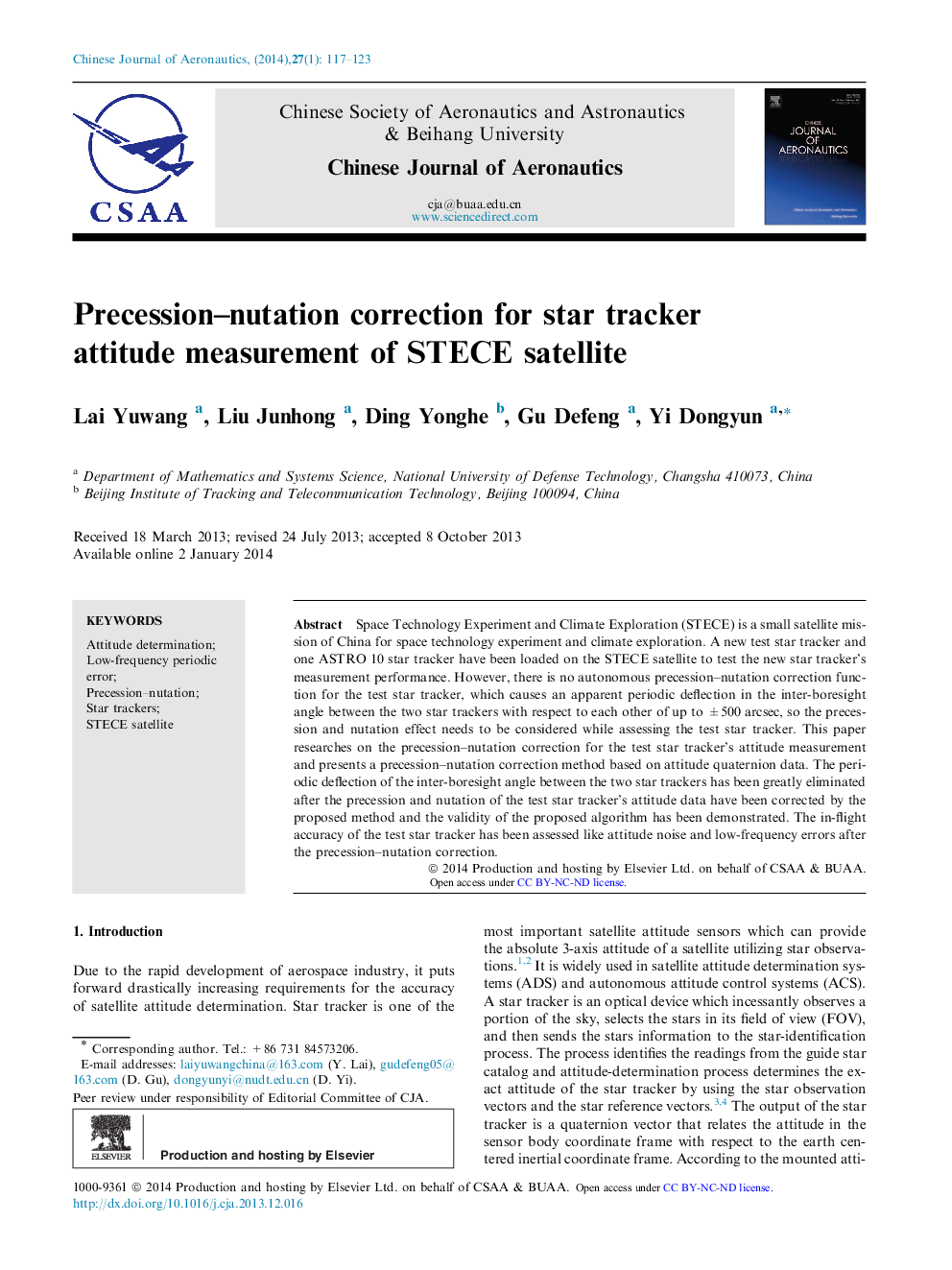| Article ID | Journal | Published Year | Pages | File Type |
|---|---|---|---|---|
| 757757 | Chinese Journal of Aeronautics | 2014 | 7 Pages |
Space Technology Experiment and Climate Exploration (STECE) is a small satellite mission of China for space technology experiment and climate exploration. A new test star tracker and one ASTRO 10 star tracker have been loaded on the STECE satellite to test the new star tracker’s measurement performance. However, there is no autonomous precession–nutation correction function for the test star tracker, which causes an apparent periodic deflection in the inter-boresight angle between the two star trackers with respect to each other of up to ±500 arcsec, so the precession and nutation effect needs to be considered while assessing the test star tracker. This paper researches on the precession–nutation correction for the test star tracker’s attitude measurement and presents a precession–nutation correction method based on attitude quaternion data. The periodic deflection of the inter-boresight angle between the two star trackers has been greatly eliminated after the precession and nutation of the test star tracker’s attitude data have been corrected by the proposed method and the validity of the proposed algorithm has been demonstrated. The in-flight accuracy of the test star tracker has been assessed like attitude noise and low-frequency errors after the precession–nutation correction.
